Travel
Travel review: a chalet holiday in France's Val d'Isere
by Christine Faughlin
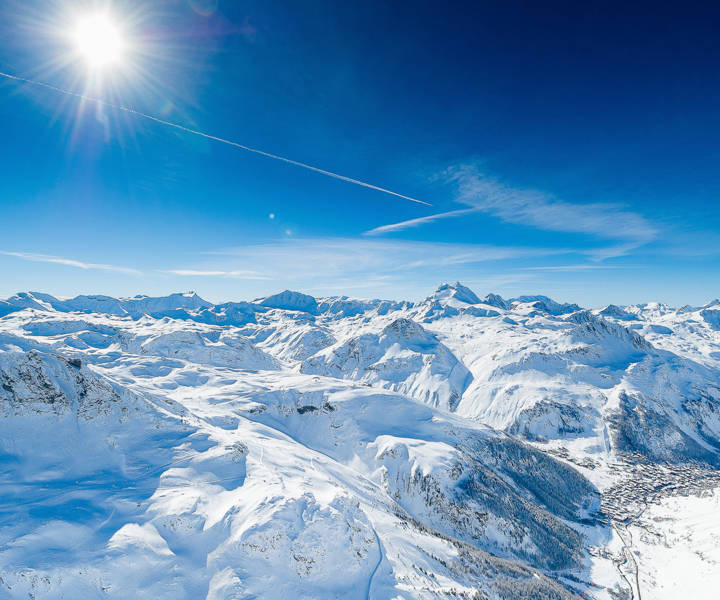
Ice floating, biathlon, contactless catering… Christine Faughlin takes a chalet holiday with a difference in France’s Val d’Isère
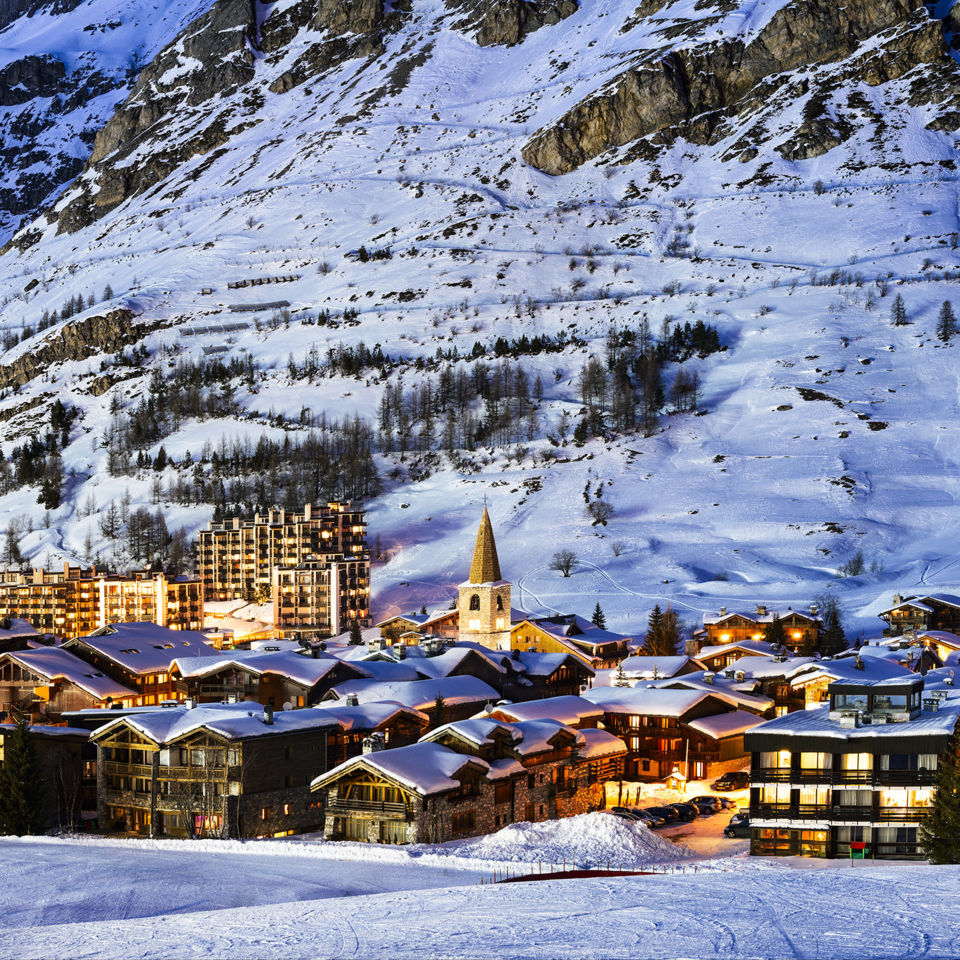
Today is one of those beautiful spring days on the mountain that’s all unspoilt snow, cloudless blue skies and dazzling sunshine. It’s nearly noon, but instead of gliding down perfectly groomed pistes against the backdrop of the French Alps, I’m sat in an ice cave squeezing myself into an unflattering dry suit that’s the colour of a freshly poached lobster.
When I finally emerge selfconsciously from the cave, I’m surrounded only by the peaks of Val d’Isère and a handful of equally uneasy people, all vacuum-packed into identical high-vis immersion suits. And that’s when the giggling starts. We look ridiculous and knowing that we’ll soon be slipping into the icy depths of Ouillette Lake, trying out the meditative pursuit of ice floating, is enough to bring fits of nervous laughter.
We’re led in an awkward single-file shuffle towards a large hole carved into the middle of the iced-over lake by our guide, Damien, who promises we’ll emerge chilled out rather than just, well, chilled. But far from beckoning invitingly as you might expect of a relaxation pool, the opening looks like the kind you see polar bears sliding into on nature documentaries. It’s hard to describe the sensation of lowering yourself into sub-zero waters and bobbing like a cork amid large chunks of ice. Thanks to the suit, the water feels fine and once the inevitable flailing and jostling for space amongst the ice subsides, it’s surprisingly easy to switch off, enjoy the surreal sensation of weightlessness and just float in total silence. While this isn’t the first time I’ve ended up flat on my back on the ski fields, it is by far the most relaxed I’ve been about it.
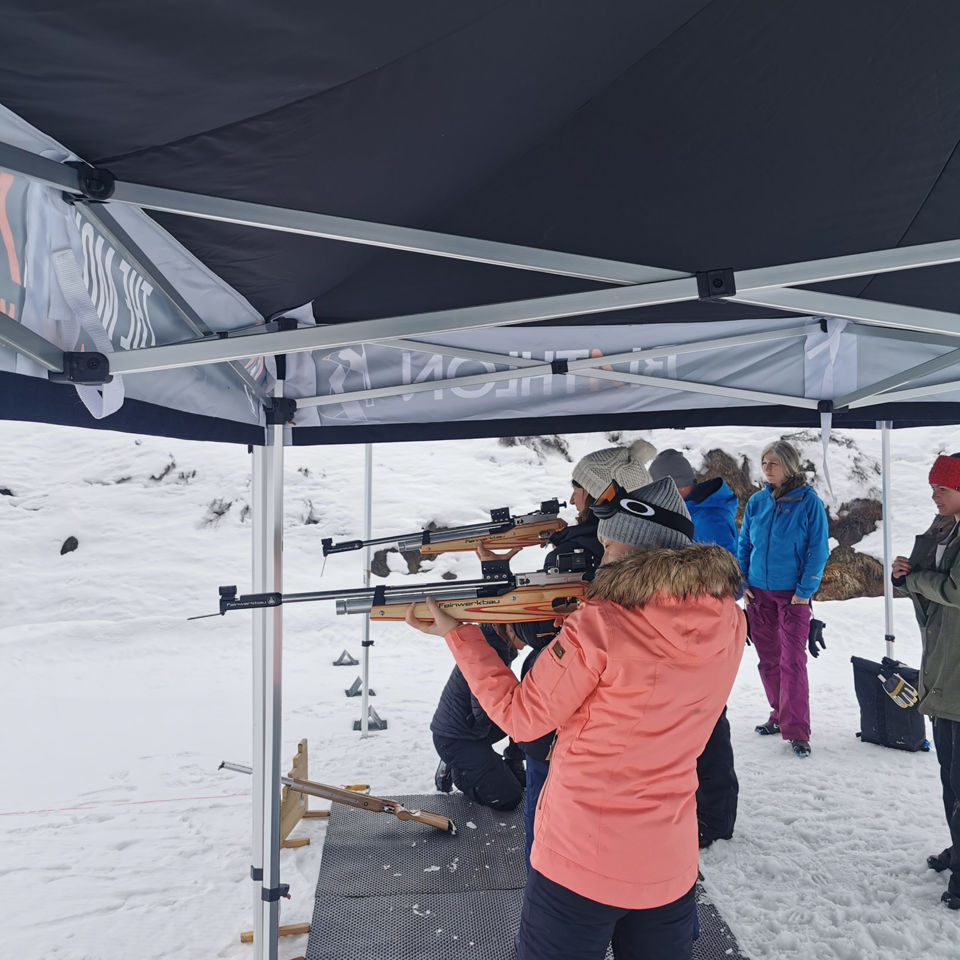
MOUNTAIN HIGH
The ice-floating session is one of a range of offerings for those who like to mix up their fun on the slopes. Of course, most go to Val d’Isère to ski – the resort is vast, venerable and in the heart of one of the world’s best ski areas. Topping 3,450m, it has 163 pistes (and two snow parks) offering 300km of downhill fun. It’s the sort of place that both beginners and experts can enjoy – there are enough black runs to satisfy any daring snowboarders and skiers, and plenty of cruisy greens and blues plus challenging reds for those who, like me, are intermediate but a bit rusty. I calculate it’s been about eight years since I last strapped myself to a snowboard so before that dip in the frozen lake, I spend the morning getting reacquainted with my snowboarding legs on a network of easy-to-navigate blue runs in the Solaise ski area. The smooth slopes are confidence-boosting for anyone getting back into the swing of it after a stretch away from the sport.
THE HIGH LIFE
While I’d have been happy to stay pootling around the Solaise, we instead take the rollercoaster-like Leissières Express chair in search of higher ground. When it crests the sharp ridge between the Solaise and Le Fornet areas and then drops down the other side, I realise – stomach in mouth – that we’re in for a thrilling afternoon exploring the resort’s Glacier du Pissaillas. We’re accompanied by guide Jean-Jacques from Oxygène ski school who is exactly what I need in a guide as I’m easing back into boarding. He’s patient, unhurried and silently assesses the different capabilities of our group before pointing us in the direction of some barely populated terrain. He knows exactly where to go for late afternoon spring runs, when the snow has softened nicely but hasn’t yet turned to slush, and offers the skiers in the group tips and techniques for making tidier turns.
At times it feels like we have the mountain to ourselves and when we do venture into busier areas, Jean-Jacques guides us down wide runs with enough room to carve our own uninterrupted path down. Every so often when I pause to catch my breath or figure out my next descent, I am struck by the majesty of the 360-degree views around us. I’d forgotten just how exhilarating exerting yourself at altitude can be... surrounded by beauty and fuelled by adrenaline, it feels really good to be alive.
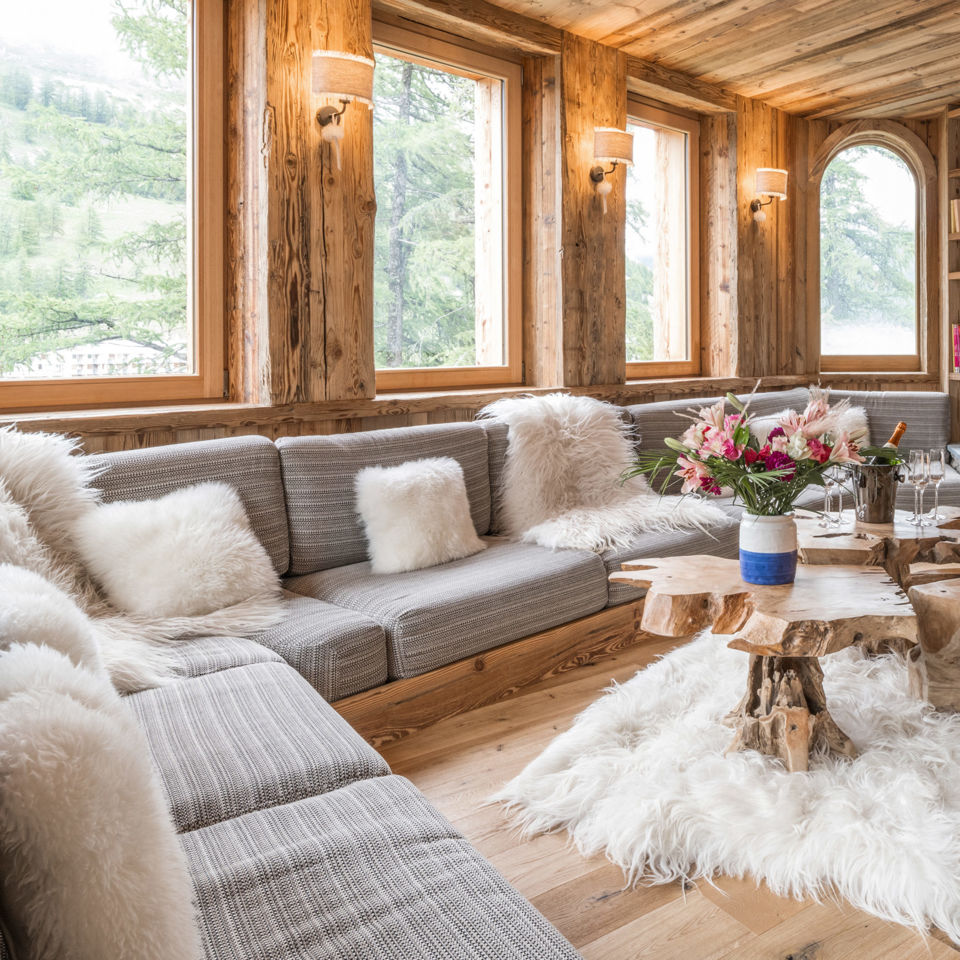
A NEW WAY TO CHALET
When tired muscles cause one too many falls, Jean-Jacques leads us on an undulating descent to a warm cable car that deposits us back in the village. To the complete relief of my jelly legs, we are met by a complimentary driver who takes us and our equipment back to Chalet Inuit, one of 50 or so contactless catered chalets from Ski France.
Even in an area that’s peppered with pretty properties, arriving at the chalet is a real wow moment. It ticks every box for a dream ski base, and once inside, it’s hard to drag yourself back out to the slopes. A chic fusion of trad Alpine design (lots of reclaimed wood, blazing fires and a whole flock’s worth of sheepskin) and contemporary touches (huge picture windows, a gleaming kitchen and high-tech boot heaters in the ski room), it sleeps up to 12 guests in five stunning bedrooms. My room, on the lower ground floor, is steps away from a lavish spa area, with a sprawling sunken jacuzzi, glass-fronted sauna and roomy rain shower. At the end of each day, we drift down to the jacuzzi, wine in hand, to let the jets work magic on aching muscles. Upstairs in the ultra-smart living area, plump cushions are scattered over comfy built-in seating, books and board games fill open shelves, and ambient lamps cast a flattering glow.
It may be the last word in mountain luxury but it really does feel like a home – we can kick back, relax and help ourselves to whatever we fancy, whenever we fancy it. A fridge fully stocked with meals, beer, wine and snacks means we never want for anything. With contactless, the chalet staff operate behind the scenes, coming in when we are out to clean and to replenish the fridge with enough provisions to send us to the slopes each morning, full of energy, and to bed each night on a full stomach. Breakfast is a pick-and-mix array of pâtisserie and bakery goods, plus everything you might need for a hot meal.
The dinners, meanwhile, are French-focused and plentiful. One night, we share Champagne and nibbles before tucking into French onion soup with Gruyère croutons, confit de canard served with cassoulet, and a speculoos cheesecake topped with mango coulis. It’s all effortless to put together – a simple case of reheating, finishing off and assembling on the plate rather than cooking entirely from scratch. What came about as a response to the rising costs and staffing issues brought about by Brexit, Ski France’s contactless catering concept was then fully rolled out against the socially distanced backdrop of Covid. Now it’s here to stay as guests have discovered an unexpected silver lining: with contactless, you still get everything you love about chalet holidays – multi-course menus, drinks on tap, help with transport, ski hire and bookings – and none of what you don’t. There’s no rushing back from the slopes, abandoning après-ski plans or foregoing long soaks in the jacuzzi to be sat at the table for a rigid 7pm dinner slot. You do it at your own pace and by your own rules.
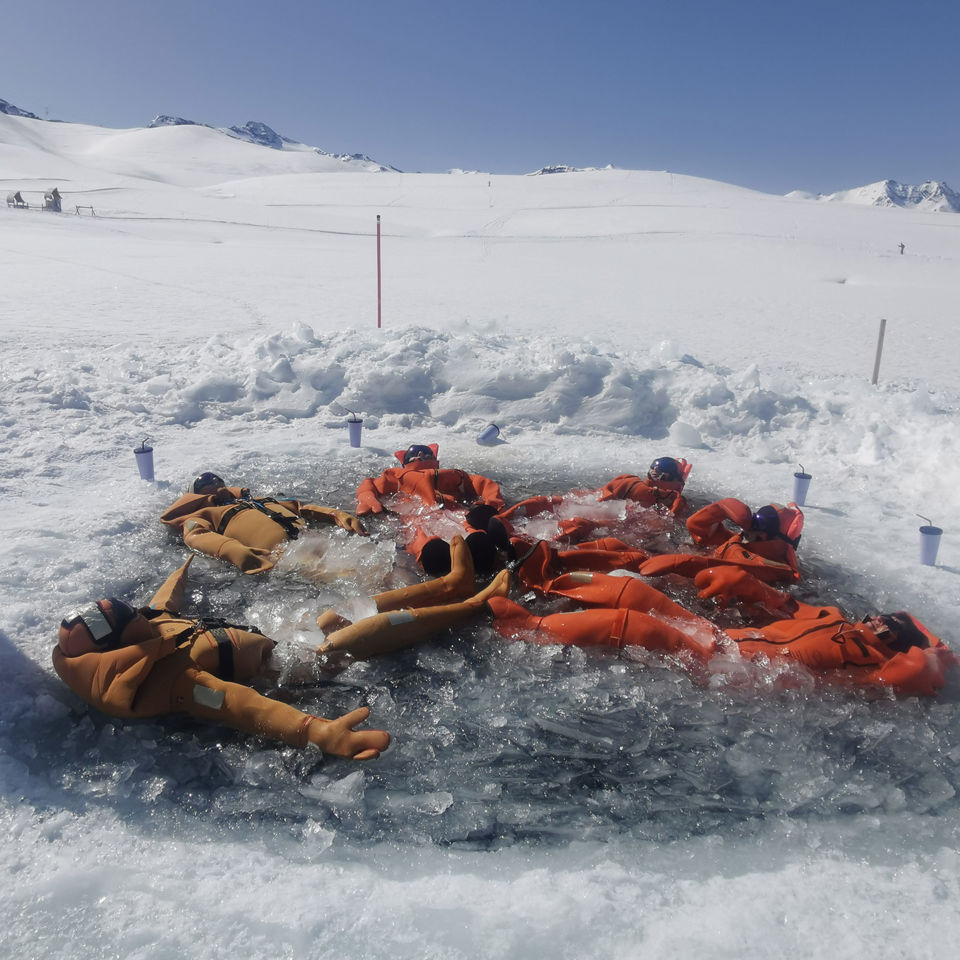
VILLAGE PEOPLE
What is shared with chalet holidays of the past, though, is a night off dining at home to explore local restaurants. Which is how we found ourselves trooping down to Le 1789, a traditional restaurant with character, charm and cheese by the bucketload. The menu is packed with Savoyard classics and the rustic tartiflette that lands with a clatter on the table before me takes a lot of beating. We end the meal with complimentary shots of génépi – a herbal Alpine liqueur – and continue on to La Baraque for live music and more génépi. Back at Chalet Inuit, exhausted and with a face reddened by mountain air and one too many Alpine liqueurs, I sink beneath a fluffy duvet that’s as thick and white as the snow outside and sleep more soundly than I have in ages.
ALPINE DINING
Next day, we’re back on the slopes, this time over in the busier Bellevarde area, and I’m decidedly worse for wear. The reawakening of long-unused muscles combined with my first-ever génépi hangover (it’s brutal) sees me fighting to stay upright on my board. The mountain air helps, of course, and we are able to test ourselves on some truly excellent runs. But when the time comes to traverse longer, flatter sections over to the La Daille area where we’re due for lunch, I start to flag. Motivated only by the knowledge that I’ll soon be clipping out of my bindings and nursing a warm drink, I dig the front edge of my board into the snow, crouch into a tight squat position and shoot off in the direction of après-ski bar La Folie Douce.
My thighs feel like they’re on fire as we slide to a stop at ‘the world’s highest cabaret’ just as it’s getting underway. Judging by the lively crowds – who later dance on the terrace tables in ski boots and spray Champagne about like F1 champions – I doubt anyone would have noticed if I had actually arrived in flames. There is a wide selection of both indoor and outdoor eating options at La Folie Douce, covering all price points. We plump for fine dining at Italian restaurant Le CuCùcina and the food is as memorable as the phenomenal views across to Mont Blanc. I start with vitello tonnato – thinly sliced veal topped with a tuna cream, Sicilian capers and pickled veg – and move on to a bowl of next-level rigatoni cacio e pepe that’s generously blanketed in grated black truffle. Against my better judgement I’m talked into a hair-of-the-dog génépi. But rather than perk me up in preparation for a last run down to the village, it sends me straight to the nearby gondola station where I join a queue of departing merrymakers, the sounds of the eclectic cabaret ringing in my ears.
TAKING AIM
For our final day, we take part in a fun introductory biathlon session with The Mountain Ski Academy. Under the expert guidance of former junior world champion Léna Arnaud, we get to grips with cross-country skiing combined with rifle shooting. As a snowboarder, it feels like I’m riding on chopsticks and no-one is more surprised than me when I trundle round a short loop trail without incident. For more than a minute at least, it looks and feels like I might just know what I’m doing – and then we’re asked to glide down an incline to where a set of rifles, pellets and targets have been set up alongside a fast-moving stream. The thought of careening into said stream is enough to cause panic, wobble and an eventual tumble. But what I lack in cross-country ski ability I make up for in shooting. I load my pellets, steady my aim, sharpen my focus and hit my targets, one after the other. I guess that’s what happens when you conjure up the kind of calm concentration and measured breathing you’d only know about if you’d spent time floating in an icy lake 2,500m above sea level. Who knew?
HOW TO BOOK
A one-week stay at Chalet Inuit costs from £9,379 for 10-12 people and includes full Premium Contactless Catering Chalet Service. For more information and to book, visit skifrance-premium.co.uk/chalet-inuit.
A two-hour private lesson with Oxygène costs from €159 for up to two people. visit oxygene.ski/ val-d-isere-ski-school.
Ice floating with Evolution 2 is priced from €80 per person. Visit evolution2.com.
An Introduction to Biathlon with Mountain Ski Academy costs from €80 per person for 2 hours. Visit tmskiacademy.com.
For more information on Val d’Isère, visit valdisere.com.












